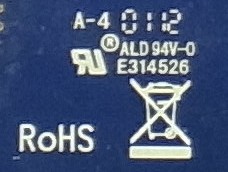AMD Pitcairn With 768 Shaders: What is This Mystery Chip?
Tom's Hardware Germany got its hands on a prototype of a AFOX HD 7850, the world's first single-slot board with this chip, which ended up being more than meets the eye. Is it an unannounced GPU, or something that was never meant to ever leave the lab?
Our colleagues at one of our European labs were handed an early version of an AMD Pitcairn-based Radeon HD 7850. What made this AFOX unit special from the currently existing Radeon HD 7850 reference design that we've already peeled apart is that is it a single-slot solution as opposed to one that takes up two of your expansion spaces. Here is what comes up with plugging it into GPU-Z:
A look at the device ID, the clock speeds and memory reveal nothing out of the ordinary. What caught our attention, however, was the number of available shader units. While the Radeon HD 7850 we were expecting comes with 1024 shaders, our sample had only 768 shaders.
This compelled us to dig deeper, so we removed the cooler and the abundant amounts of thermal paste. The board itself was produced by AOLIDA, Jiutan Xinhua Town (Guangdong).
Please keep in mind that this is just an engineering sample, and is not a fair representation of any final shipping product. Any product packing a Radeon HD 7850 GPU will obviously be equipped with 1024 shaders. We're treating this product as something of a mystery in the Tom's Hardware labs.
We tried looking into the BIOS to see if it would shed some light on the unexpected number of shaders, but none of our traditional BIOS tools revealed any information. The card identified itself as a Radeon HD 7850 in AMD's current Catalyst driver suite software, but it was incompatible with the Overdrive overclocking functions.
BIOS limitation, laser-cut or faulty chip?
With a card that identifies itself (somewhat) as a Radeon HD 7850, we were expecting a chip stamped with the batch number 1151, like all of the other HD 7850 and 7870 chips so far, but scrubbing the GPU revealed 1152 ENG as the batch number, further confusing the matter. If it is indeed a different chip, then perhaps it isn't a case of cut or BIOS-disabled shaders. In fact, even after attempting to flash the reference firmware of an HD 7870 and an HD 7850, the card was both stable and exhibited no change in performance, leading us to assume that it truly only packs 768 shaders.
Get Tom's Hardware's best news and in-depth reviews, straight to your inbox.
We've brought this issue to AMD only to be referred back to the board partners. AFOX told use that this chip belonged to a batch of GPUs AMD delivered in March 2012 for layout and design purposes. Still, we're not sure how this 768-shader GPU ended up on the board designated for the HD 7850, pre-production sample or not.
One theory is that AMD is sending out partially defective chips for PCB developers to experiment with instead of throwing them away, but that may go against the logic of having engineers trying to validate on an 'incomplete' GPU. Maybe - just maybe - it's an unannounced Radeon HD 7830 that slipped through the cracks and into our labs.
Our team in Germany will be putting this card through its paces. Stay tuned for that coming next week!
Update 05/03/2012
AMD Shanghai became aware of our discovery of a Pitcairn chip with 768 shaders and made it clear that it wasn't especially happy about us spreading news of a Radeon HD 7850 with only 768 shaders. To be clear, AFOX was just as surprised as everyone else to learn about this mystery chip. The PCB with our mystery chip was produced at the beginning of the Radeon HD 7800-series' production run. It's plausible that these 768-shader chips were indeed for validation due to supply considerations. Given the stir that this discovery has created, it's safe to assume that this chip wasn't intended to leave the engineering labs.

Igor Wallossek wrote a wide variety of hardware articles for Tom's Hardware, with a strong focus on technical analysis and in-depth reviews. His contributions have spanned a broad spectrum of PC components, including GPUs, CPUs, workstations, and PC builds. His insightful articles provide readers with detailed knowledge to make informed decisions in the ever-evolving tech landscape



